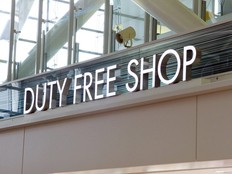CHARLEBOIS: Why tipping in Canada needs a rethink
The tipping model has evolved into something that more closely resembles a wage subsidy

Article content
Tipping fatigue is real — and it’s spreading. What was once a gesture of appreciation has become an increasingly opaque and frustrating part of dining out.
In our cashless, digital economy, Canadians are now routinely nudged — or guilted — into tipping more, often through emotionally manipulative interfaces. Sad emojis for selecting a 15% tip? Prompts for 20% on a $6 latte? This phenomenon, known as tip creeping, has become a serious irritant for consumers.
But there’s a deeper issue — one that many don’t notice. In most provinces, tips are calculated after sales tax is added to the bill. That means a 20% tip on a $100 meal with a 15% tax becomes $23, not $20. This hidden markup adds confusion and undermines consumer trust, especially when it’s unclear whether the extra money, also known as “Tipflation,” is going to the server, shared with staff, or kept by management. Most diners never check.
This week, Quebec decided to do something about it. It is now illegal in that province for payment terminals to calculate tips on post-tax amounts. Tips must be applied to the pre-tax total. In addition, restaurant operators must clearly display the total bill, including the tip. No emojis, no games — just transparency.
While some critics argue this is government overreach, the truth is that inaction from the food service industry has made regulation necessary. The tipping model, once rooted in merit and service quality, has evolved into something that more closely resembles a wage subsidy. In many cases, consumers feel pressured into tipping simply to compensate for inadequate base pay — rather than to reward good service.
Some restaurateurs are now experimenting with tip-free models, incorporating service charges directly into menu prices. This eliminates guesswork and creates more predictable income for staff. However, this shift isn’t without consequences: Top-performing employees may seek out tip-based restaurants where they can earn more, leading to talent drain.
There is also credible academic research suggesting that tipping perpetuates discriminatory behaviour. Studies have shown that tip amounts can be influenced by arbitrary and biased factors — like a server’s appearance or accent — rather than the quality of service.
Unlike Europe, where gratuities are typically included in the bill, North America has clung to an outdated and often chaotic tipping culture. The restaurant industry has failed to establish coherent standards or lead a serious discussion about reform. That vacuum has opened the door for governments to intervene, as Quebec has now done.
If the industry does not self-correct, we can expect more provinces to follow suit. For the sake of both consumers and workers, tipping practices need to be more transparent, equitable and consistent. Otherwise, public trust — and the sector’s integrity — will continue to erode.
— Dr. Sylvain Charlebois is the Director of the Agri-Food Analytics Lab at Dalhousie University and co-host of The Food Professor Podcast











Postmedia is committed to maintaining a lively but civil forum for discussion. Please keep comments relevant and respectful. Comments may take up to an hour to appear on the site. You will receive an email if there is a reply to your comment, an update to a thread you follow or if a user you follow comments. Visit our Community Guidelines for more information.